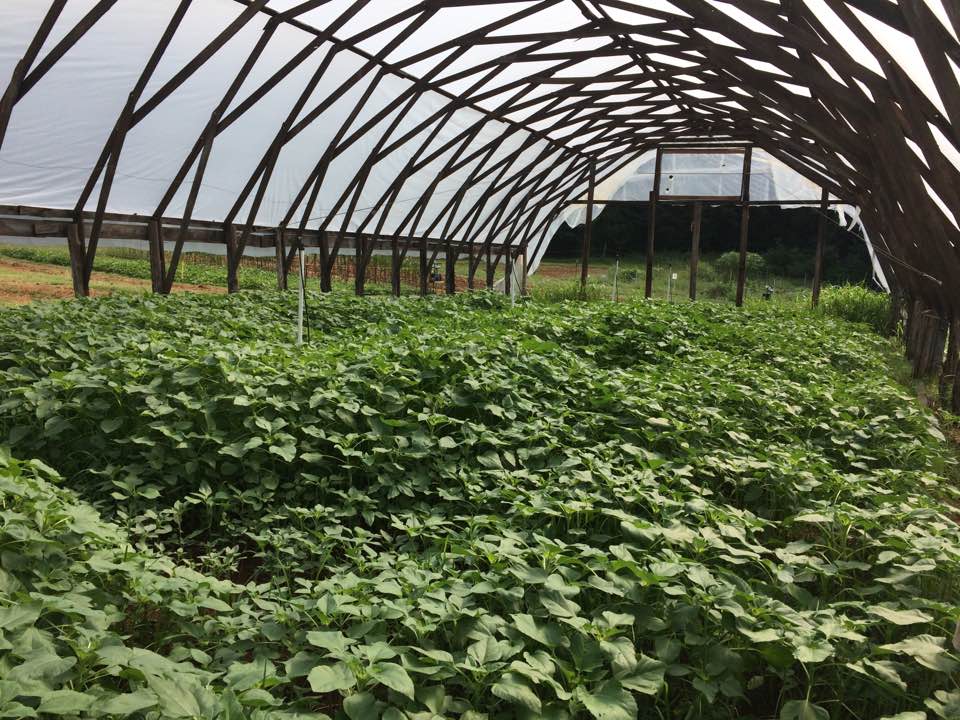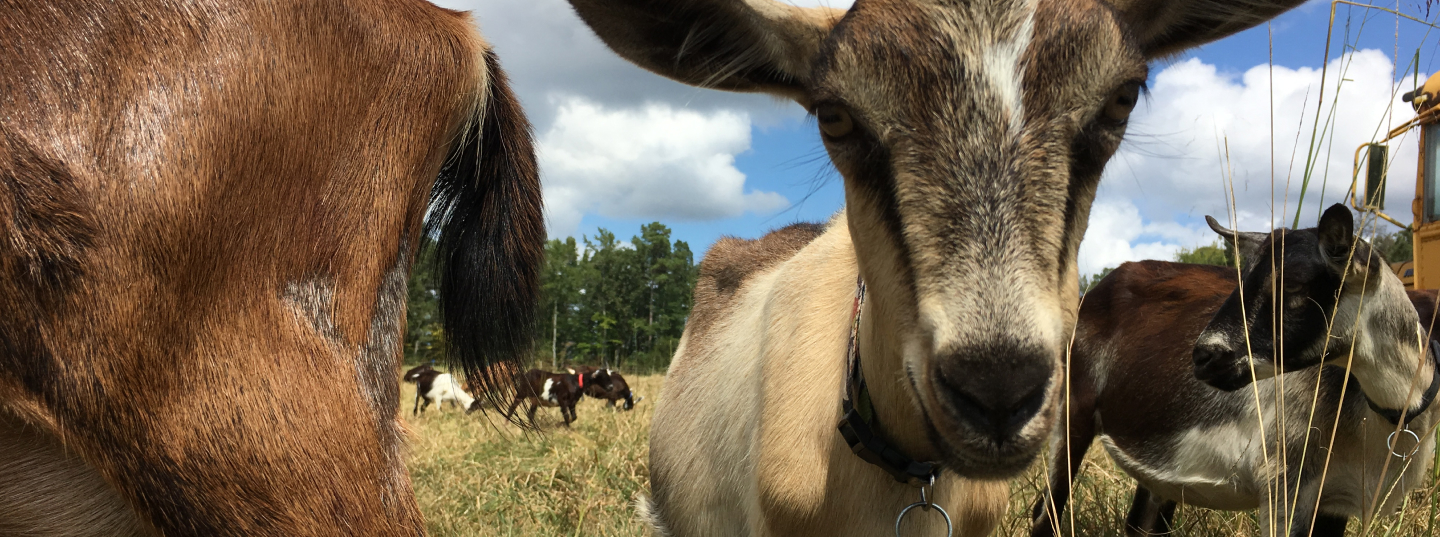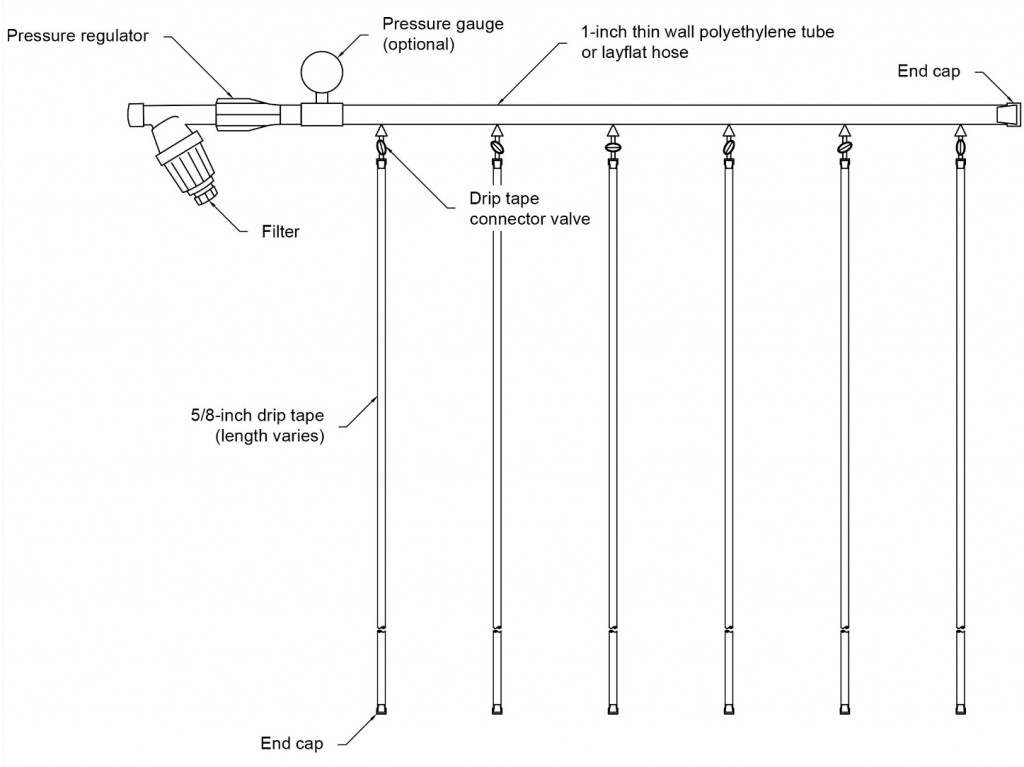by Gena Moore, CFSA’s Organic Research Coordinator

A cover crop stand of sunflowers in a high tunnel irrigated with a wobbler head sprinkler system at Lomax Farm.
Irrigation is a much debated topic among many farmers. Some simply rely on rain and hand watering while others meticulously run drip tape and spend countless hours monitoring and adjusting irrigation schedules. Whether you produce in the field, high tunnel, or greenhouse, water amounts can greatly impact the health and vigor of your crops. For example, bitterness in cucumbers can be caused by the lack of or inconsistent watering. Also, crops like tomatoes require varying amounts of water throughout their life cycle. Adjusting irrigation amounts for tomatoes can impact the marketable quality of fruit. No one likes bitter cucumbers or ugly tomatoes so taking the time to research and plan irrigation can influence marketable harvests and, in-turn, profit.
Although irrigation is important for all production types, high tunnels have unique needs, constraints, and benefits in respect to irrigation. High tunnels can be a great resource for farmers. The season extension capabilities provided by high tunnels can open up new opportunities and price premiums in the local marketplace. However, producing in high tunnels is different from field production and can be difficult to master. Although plants have the same water needs in both field and high tunnel production, irrigation requirements are very different. Due to the lack of rain fall, high tunnels require greater irrigation amounts. These irrigation amounts can be tailored to a crops water needs that change throughout its growth cycle. This controlled irrigation is what sets high tunnel production apart from field production in regards to matching crops and water needs.
Drip irrigation is commonly used in high tunnels for vegetable production. Drip irrigation conserves water and reduces risk of disease making it a good choice for many crops. The many variations in drip irrigation systems make it easy to tailor to each crop’s needs. Drip irrigation consists of flat drip tape with emitters that slowly release water. Emitter spacing can be matched with crop spacing to maximize the water efficiency. Drip irrigation can be installed almost anywhere and works well in tunnels of all sizes. Below is a diagram of a drip irrigation system that could be installed in a high tunnel.
Overhead irrigation, or sprinkler irrigation, can be used in high tunnels for cover crops and some lettuce/greens crops. Many different products are available that can make this type of irrigation possible. Overhead systems can be permanent or temporary, based on production needs. Sprinklers should be used in the morning to reduce water loss through evaporation and also to reduce leaf wetness.
Take some time this winter to evaluate your irrigation practices and be ready for production. For more information on high tunnel irrigation, check out CFSA’s High Tunnel Micro-Irrigation Guide.



